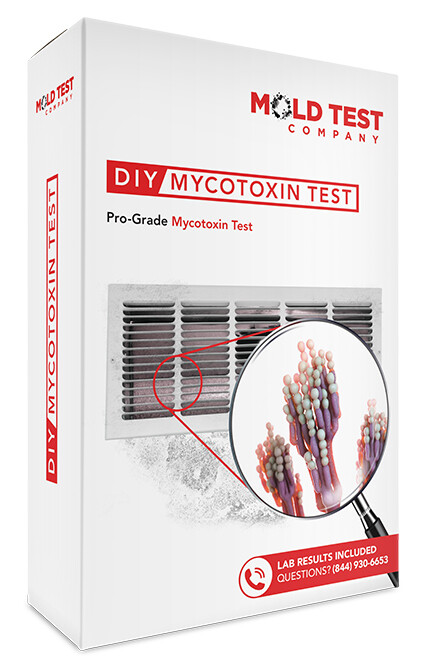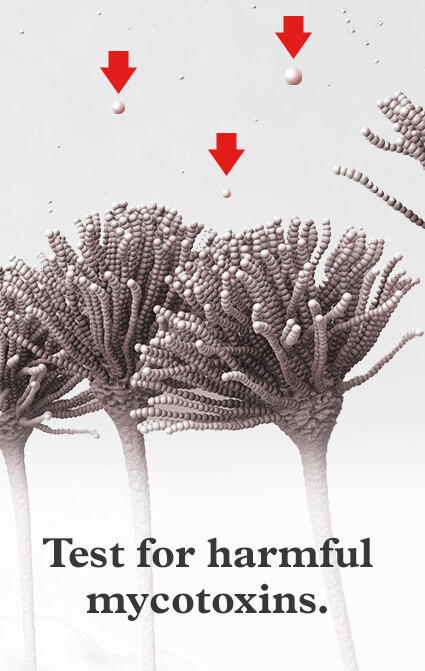Choosing the Right Mycotoxin testing Services for Your Organization
Choosing the Right Mycotoxin testing Services for Your Organization
Blog Article
The Need of Mycotoxin Checking in Agricultural Products to Make Sure Customer Security
The need of mycotoxin screening in agricultural products is an important aspect of public health and wellness and safety that calls for comprehensive assessment. Mycotoxins, hazardous substances generated by certain fungis, can penetrate different plants, causing substantial health and wellness threats for consumers, such as cancer causing results and body organ damage. Routine mycotoxin testing not only removes and identifies contaminated items from the supply chain yet also makes sure conformity with safety and security requirements and enhances customer depend on. Understanding the techniques and advantages of such testing is essential to fully value its relevance in securing our food supply.
Recognizing Mycotoxins
Mycotoxins, poisonous secondary metabolites produced by certain fungi, provide a significant threat to agricultural items and human wellness. These compounds are produced by various varieties of molds, such as Aspergillus, Fusarium, and Penicillium, which can pollute crops both pre- and post-harvest - Mycotoxin testing Services. The most common mycotoxins consist of aflatoxins, ochratoxin A, fumonisins, zearalenone, and deoxynivalenol (DON)
Mycotoxin contamination can take place under specific ecological problems, such as high moisture and temperature, which favor the growth of mold. Agricultural items like grains, nuts, seasonings, dried fruits, and coffee are specifically susceptible. The existence of mycotoxins in these commodities can result in considerable financial losses due to decreased plant returns and the requirement for extensive testing and decontamination processes.
Understanding the biochemical nature and development of mycotoxins is important for establishing effective reduction techniques. Research study has actually shown that mycotoxins display a variety of chemical structures and properties, making detection and elimination difficult. Advanced analytical techniques, including chromatography and mass spectrometry, are utilized to determine and quantify mycotoxins in farming products, making sure that contamination degrees remain within secure limitations developed by governing bodies.
Health And Wellness Dangers of Mycotoxins
Given the considerable threats linked with mycotoxins in farming products, recognizing their impact on wellness is vital. Mycotoxins, hazardous additional metabolites produced by fungis, position serious risks to both human and animal health. Persistent direct exposure, also at reduced degrees, can cause a series of unfavorable health impacts, including carcinogenicity, teratogenicity, and immunosuppression. Aflatoxins, amongst the most well-known mycotoxins, are classified as Group 1 health hazards by the International Firm for Research Study on Cancer (IARC), primarily influencing the liver and enhancing the danger of hepatocellular cancer.
Severe mycotoxin poisoning, although much less usual, can create prompt and serious health issue such as liver damage, intestinal disturbances, and hemorrhaging. Ochratoxin A, another potent mycotoxin, is linked to kidney damages and has potential carcinogenic effects. Fumonisins, mainly impacting maize, are connected with esophageal cancer and neural tube flaws.

Usual Resources of Contamination
Understanding the typical sources of contamination is crucial for effectively handling and reducing the dangers postured by mycotoxins. Mycotoxins are toxic additional metabolites generated by specific kinds of fungi, which can pollute agricultural products at different stages of processing, manufacturing, and storage. The main resources of contamination include area conditions, post-harvest handling, and storage space environments.
Area problems play a considerable role, with aspects like climate, plant sensitivity, and dirt health affecting fungal growth. Plants such as corn, peanuts, wheat, and tree nuts are particularly prone to mycotoxin-producing fungi like Aspergillus, Fusarium, and Penicillium species. Poor crop turning and bad parasite administration can worsen the danger of contamination.
Post-harvest handling is one more critical phase where contamination can occur. Mechanical damage throughout harvesting and transport creates entrance factors for fungis, while improper drying techniques can leave wetness degrees high enough to sustain fungal development.
Storage space environments contribute substantially to contamination risks. Inadequately maintained storage centers with high moisture and temperature degrees produce excellent conditions for mycotoxin production. Normal assessments and correct storage conditions are essential in suppressing this hazard.
Mycotoxin Evaluating Techniques
Effective administration of mycotoxin contamination hinges not just on acknowledging potential resources but also on executing robust testing techniques to detect these harmful compounds. Mycotoxin testing methods can be extensively classified right into chromatographic and immunochemical techniques. High-performance fluid chromatography (HPLC) and gas chromatography-mass spectrometry (GC-MS) represent innovative chromatographic approaches recognized for their high level of sensitivity and accuracy. These strategies are experienced at evaluating numerous mycotoxins in intricate matrices, making them indispensable for comprehensive evaluation.
On the various other hand, enzyme-linked immunosorbent assay (ELISA) and side circulation assays are popular immunochemical approaches. look what i found ELISA, specifically, is widely made use of as a result of its cost-effectiveness, convenience of usage, and fast turn-around time. Lateral circulation assays give fast, on-site testing capabilities, making them appropriate for field applications where prompt choices are required.
Furthermore, innovations in molecular biology have actually presented PCR-based approaches capable of spotting mycotoxin-producing fungi at hereditary levels, providing an anticipating method to contamination danger. Incorporating these varied methods boosts the reliability and comprehensiveness of mycotoxin discovery, making sure that agricultural items fulfill safety standards and securing customers from possible health threats.
Advantages of Routine Evaluating

Normal mycotoxin screening uses significant advantages that considerably bolster agricultural safety and security and top quality. Mycotoxins, toxic compounds produced by specific fungi, can pollute food and present major health threats, consisting of cancer and severe poisoning.
Moreover, regular screening aids in maintaining the integrity and credibility of agricultural producers. By rigorously managing and checking mycotoxin levels, producers can prevent pricey recalls and legal consequences. This not just ensures compliance with rigid global safety and security standards yet additionally promotes customer trust fund and loyalty.

Verdict
The need of mycotoxin screening in agricultural items is underscored by the substantial health dangers presented by these toxic substances. It boosts the reputation of manufacturers and cultivates trust fund within the farming supply chain, eventually guarding public wellness.
The requirement of mycotoxin testing in agricultural products is an important facet of public wellness and safety and security that calls for complete examination. Mycotoxins, harmful compounds generated by specific fungi, can infiltrate numerous crops, leading to substantial health and wellness dangers for consumers, such as carcinogenic effects and organ damage.Mycotoxins, poisonous second metabolites created by certain fungis, present a considerable risk to farming items and human health.Given the significant risks connected with mycotoxins in agricultural items, recognizing their impact on health and wellness is vital (Mycotoxin testing Services).The requirement of mycotoxin screening in agricultural items our website is highlighted by the significant wellness risks postured by these hazardous compounds
Report this page